Baldwin's Patent model
Baldwin invented the principle of the pinwheel independently from Odhner (some think that Odhner got his idea from Baldwin's machine in the first place, and both may have gotten inspiration from Staffel's machine). It is a somewhat ungainly apparatus, that was set up for printing, not displaying, its results. This particular machine appears to be the patent model, which only has three input places. It was transfered from the US Patent Office to the Smithsonian Institution in 1908. The 10 regular models that were manufactured had more input disks, and no printing mechanism (there is one more in the Smithsonian which was also used by McCoy in the Treasury). The machine appears decidedly more delicate and antique due to the use throughout of laquered brass and engraving as opposed to paint and stamping in the Odhners. For details of its construction and operation, look up US patent N° 0159244.
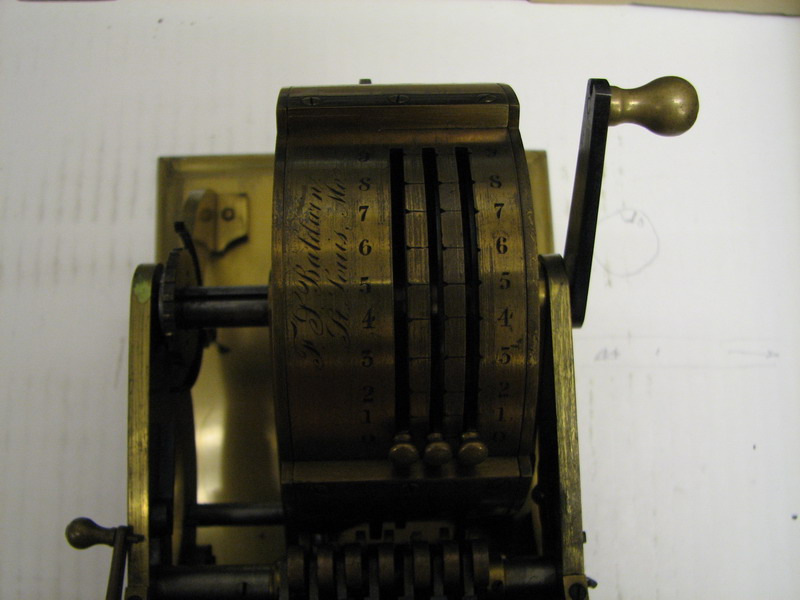
The setting part of the pinwheel cylinder. With the machine in front of you, ready to operate, the pinwheel cylinder is at the back.

The "counting" part of the pinwheel cylinder.
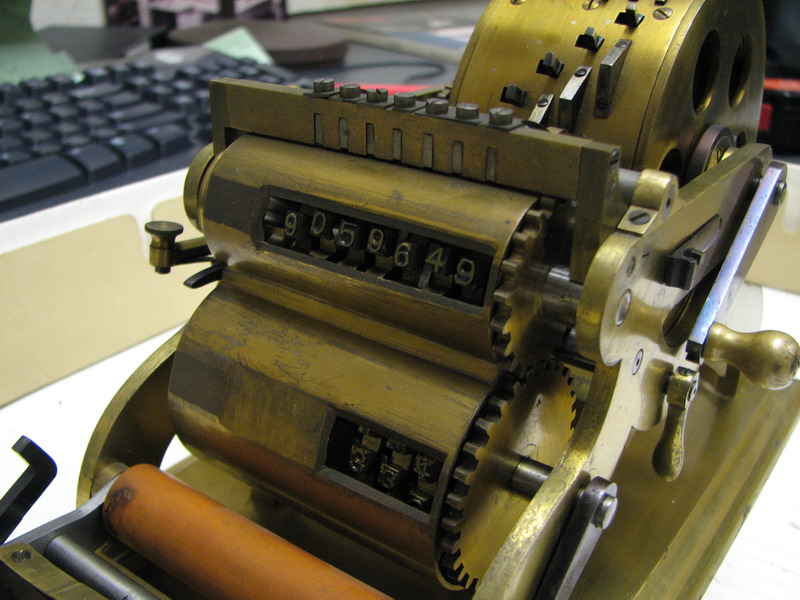
A view of the front of the machine, nicely showing the ten's carry part of the pinwheel cylinder at the top of the picture.
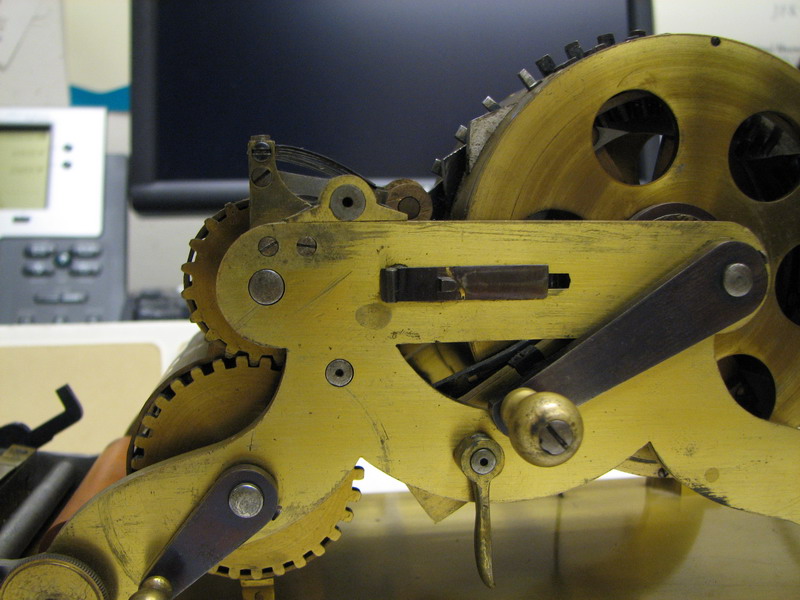
The main crank for turning the pinwheel cylinder is on the right, the clearing crank for both registers on the left. The thumb lever in the middle serves to lock the crank.
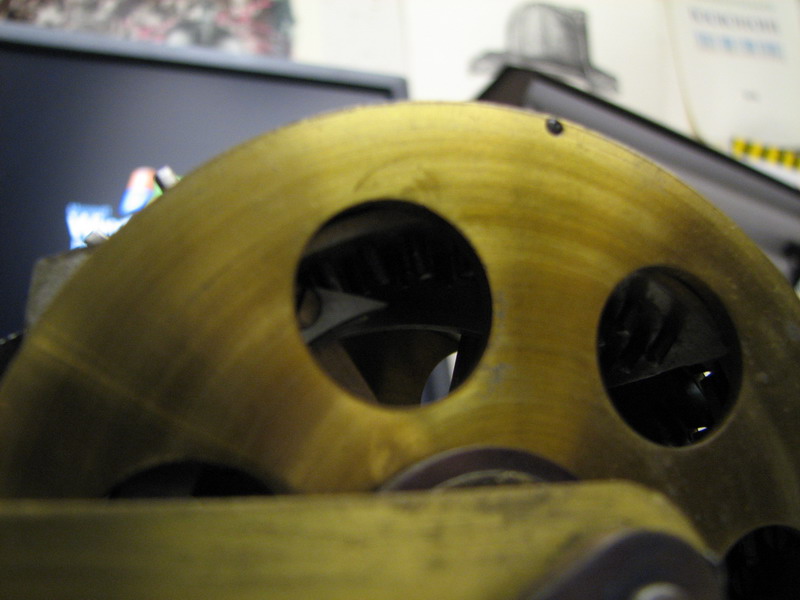
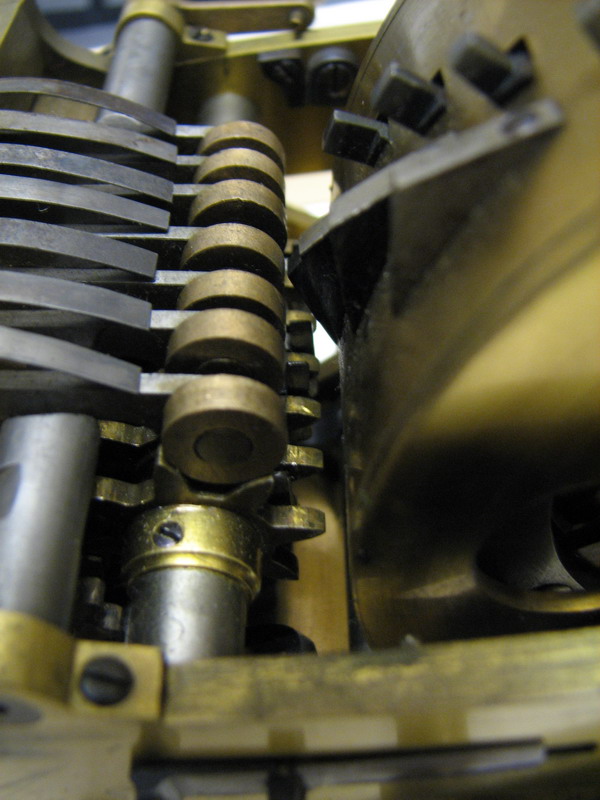
Ten's carry mechanism - it is similar to the one on an Odhner machine. There are spring-loaded beveled bars pushed towards the pinwheel cylinder when the wheel passes 9, which then push the extra tooth on either side of the nine regular pins directly in line with the next cog wheel. The beveled bar is then pushed back by the large triangular chunks of metal on the pinwheel cylinder.
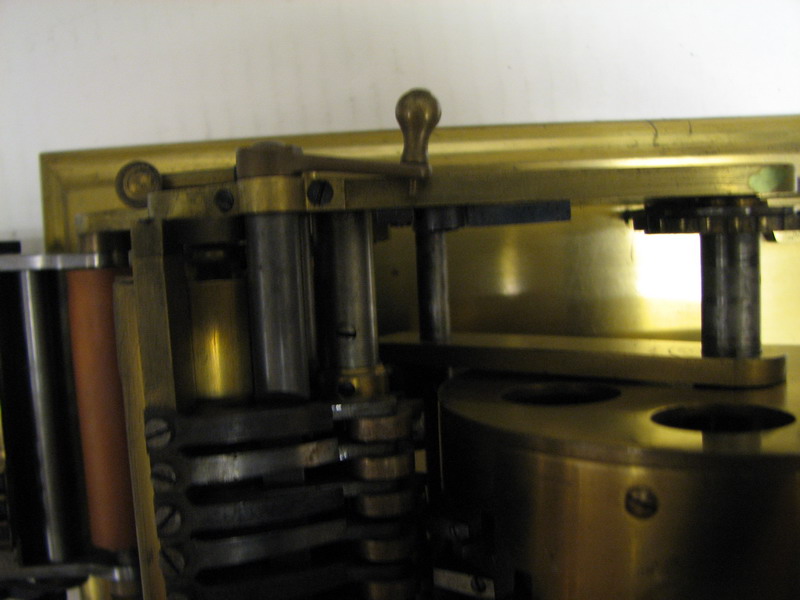
Release lever for the result register, and the button for stopping the rotation of the wheels at 0. To clear the registers, you need to push the button down, with the same hand pull the lever to the front, and then turn the clearing crank on the other side of the machine to clear both registers.
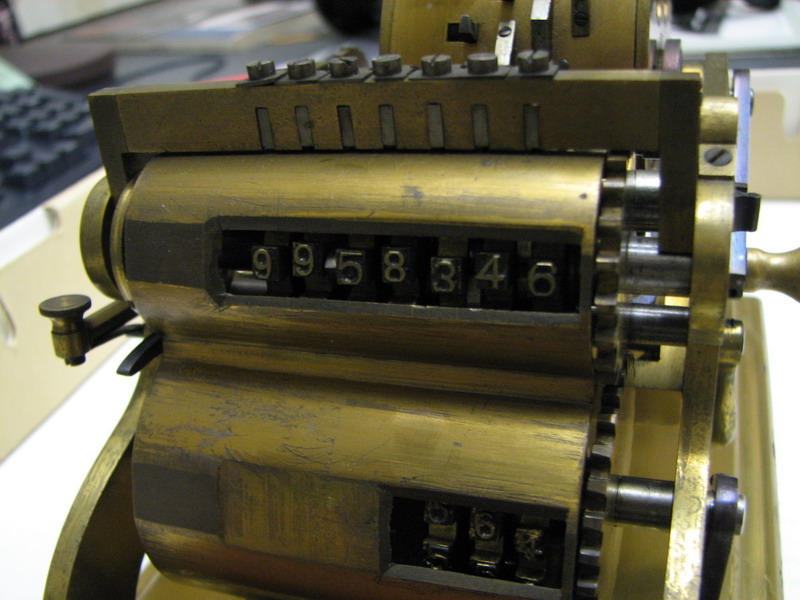
Result register on top, the revolution register at the bottom. The revolution register is operated by an arm on an eccentric on the side of the cylinder, much like the Odhner machine (only here the register is fixed and the cylinder moves). There is no tens carry in the revolution register.
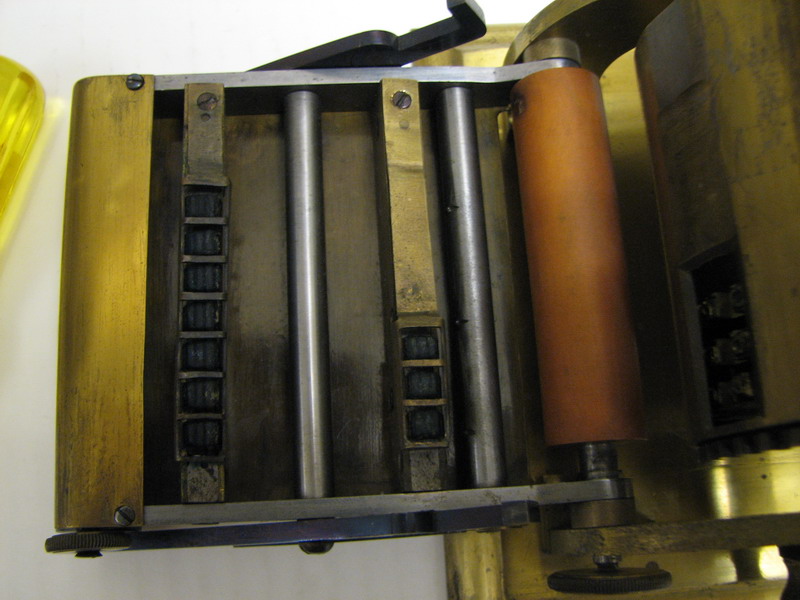
Rubber pads provide a good impression of the numbers on the paper roll.
A big thank you again to the National Museum of American History, the Smithsonian Institution and especially to dr. Kidwell, for this unexpected extra!
